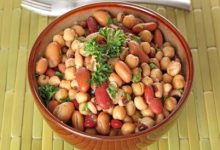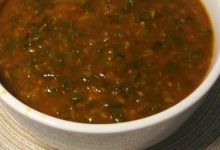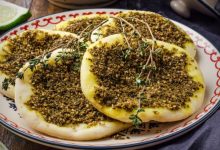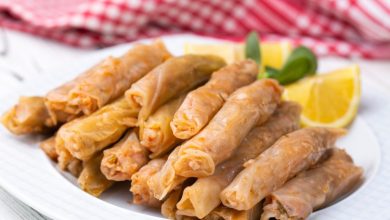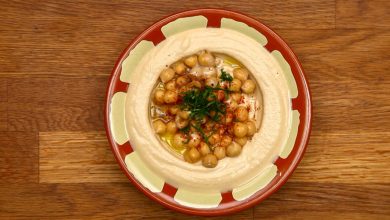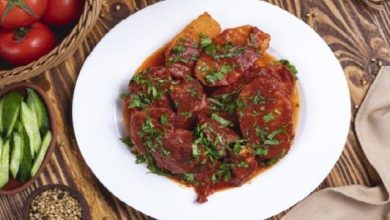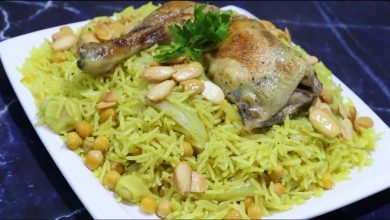Introduction
Chicken Kabsa, a traditional Saudi Arabian dish, is often considered one of the best Middle Eastern culinary treasures. Known for its rich blend of spices, aromatic rice, and tender chicken, Kabsa is a festive dish typically served during special occasions and family gatherings. The vibrant flavors of Kabsa come from a combination of various spices, vegetables, and meat, cooked to perfection in a single pot. In this article, we will dive deep into the process of making Chicken Kabsa, covering the ingredients, step-by-step instructions, nutritional information, and much more.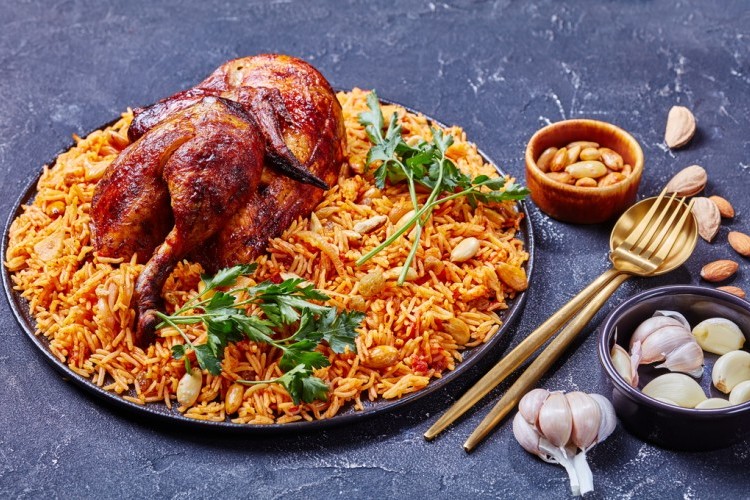
Table of Contents
- Ingredients
- Cooking Instructions
- Nutritional Information
- Variations of Chicken Kabsa
- Serving Suggestions
- Health Benefits of Kabsa Ingredients
- History and Origin of Chicken Kabsa
- Frequently Asked Questions
- Conclusion
Ingredients
Main Ingredients
| Ingredient | Quantity | Description |
|---|---|---|
| Chicken | 1 whole (cut into pieces) | Skinless and bone-in, or boneless |
| Basmati Rice | 3 cups | Long-grain rice, soaked for 30 minutes |
| Onions | 2 large | Finely chopped |
| Garlic cloves | 6-8 | Minced |
| Tomatoes | 4 large | Chopped or blended |
| Carrots | 2 medium | Grated or finely julienned |
| Green chili peppers | 2-3 | Chopped (optional, for spiciness) |
| Tomato paste | 2 tablespoons | Adds a rich, deep flavor |
| Chicken broth | 6 cups | Homemade or store-bought |
| Cooking oil | 4 tablespoons | Olive oil, vegetable oil, or ghee |
| Raisins | 1/2 cup | Optional, for sweetness |
| Almonds or pine nuts | 1/2 cup | Toasted for garnish |
| Bay leaves | 2 | Adds aroma |
| Cinnamon sticks | 2 | Provides warmth to the flavor |
| Cardamom pods | 5-6 | Crushed for flavor |
| Cloves | 5-6 | Whole |
| Ground cumin | 1 tablespoon | Adds earthy warmth |
| Ground coriander | 1 tablespoon | For a zesty, citrusy note |
| Ground turmeric | 1 teaspoon | Adds color and slight bitterness |
| Ground cinnamon | 1 teaspoon | Enhances warmth |
| Ground black pepper | 1 teaspoon | Adjust to taste |
| Ground allspice | 1/2 teaspoon | Optional |
| Salt | 1 tablespoon | Adjust to taste |
Optional Ingredients
| Ingredient | Quantity | Description |
|---|---|---|
| Lemon | 1 | Sliced for garnish |
| Parsley | 1/2 cup | Chopped, for garnish |
| Yogurt | 1 cup | Served as a side |
| Boiled eggs | 2-4 | Optional, for extra richness |
Cooking Instructions
Step 1: Preparing the Chicken
- Marinate the Chicken: Wash and clean the chicken pieces thoroughly. In a large bowl, marinate the chicken with 1 tablespoon of salt, 1 teaspoon of black pepper, 1 tablespoon of ground cumin, and 1 tablespoon of ground coriander. Set aside for 30 minutes to let the flavors soak in.
- Searing the Chicken: Heat 2 tablespoons of cooking oil in a large, heavy-bottomed pot over medium heat. Add the marinated chicken pieces, searing them until they are golden brown on both sides (about 4-5 minutes per side). Remove the chicken and set aside.
Step 2: Preparing the Aromatic Base
- Sauté the Onions: In the same pot, add the remaining 2 tablespoons of oil. Add the chopped onions and sauté until they turn translucent and slightly golden (about 5-7 minutes).
- Add Garlic and Spices: Once the onions are golden, add the minced garlic, crushed cardamom pods, cloves, cinnamon sticks, and bay leaves. Stir the mixture for 2-3 minutes until fragrant.
- Tomato Paste and Tomatoes: Add the tomato paste and chopped tomatoes to the pot. Stir and let it cook for another 5 minutes until the tomatoes soften and the mixture becomes saucy.
Step 3: Cooking the Rice and Chicken
- Add the Chicken Broth: Pour in the chicken broth, ensuring it fully covers the tomato mixture. Stir and bring it to a gentle boil.
- Return the Chicken: Place the seared chicken pieces back into the pot, making sure they are submerged in the broth. Add the grated carrots, green chili peppers, and any other optional vegetables. Reduce the heat to low, cover, and simmer for about 30-35 minutes or until the chicken is fully cooked.
- Add the Rice: Once the chicken is cooked, remove it from the pot and set it aside again. Add the drained basmati rice to the broth. Stir gently to ensure the rice is evenly distributed, then cover the pot and let it cook on low heat for 15-20 minutes.
Step 4: Final Assembly and Garnishing
- Fluff the Rice: After 15-20 minutes, check the rice. It should be soft and fluffy, having absorbed all the broth. Use a fork to gently fluff the rice.
- Toast the Nuts: In a small pan, toast the almonds or pine nuts in a little oil until they turn golden. Set them aside for garnishing.
- Assemble the Kabsa: Layer the cooked chicken pieces over the rice in the pot. Garnish with the toasted almonds, raisins, parsley, and lemon slices.
Step 5: Serving
- Serve Hot: Serve Chicken Kabsa hot, with a side of yogurt or a simple cucumber salad.
Nutritional Information
Per Serving (Based on 8 Servings)
| Nutrient | Amount per Serving | % Daily Value* (DV) |
|---|---|---|
| Calories | 450 kcal | 22% |
| Total Fat | 18g | 28% |
| Saturated Fat | 3g | 15% |
| Cholesterol | 70mg | 23% |
| Sodium | 650mg | 27% |
| Total Carbohydrates | 48g | 16% |
| Dietary Fiber | 3g | 12% |
| Sugars | 5g | – |
| Protein | 25g | 50% |
| Vitamin A | 10% DV | |
| Vitamin C | 15% DV | |
| Calcium | 6% DV | |
| Iron | 15% DV |
*Daily Values are based on a 2,000-calorie diet. Your daily values may be higher or lower depending on your calorie needs.
Variations of Chicken Kabsa
There are several variations of Kabsa, depending on the region or personal preferences. Below are some of the most popular ones:
1. Lamb Kabsa
- Replace the chicken with lamb, adjusting the cooking time to ensure the meat is tender.
2. Vegetarian Kabsa
- Omit the chicken and replace it with a mixture of vegetables such as cauliflower, potatoes, and bell peppers.
3. Kabsa with Fish
- In coastal areas, fish is sometimes used in place of chicken or lamb. White fish fillets like cod or tilapia work well with the Kabsa spices.
4. Spicy Kabsa
- Increase the amount of green chili peppers or add 1 teaspoon of red chili powder for a spicier version of Kabsa.
Serving Suggestions
Chicken Kabsa is a versatile dish that pairs well with a variety of sides. Here are a few suggestions:
1. Yogurt Salad
- A simple salad made with cucumbers, tomatoes, and yogurt helps balance the rich flavors of Kabsa.
2. Pickled Vegetables
- Pickled carrots, cucumbers, and onions add a tangy crunch to the meal.
3. Pita Bread
- Serve warm pita bread alongside Kabsa for scooping up the rice and chicken.
Health Benefits of Kabsa Ingredients
The ingredients in Chicken Kabsa not only add to its rich flavor but also offer several health benefits. Below are some key ingredients and their health advantages:
1. Chicken
- Rich in protein, chicken helps build and repair tissues. It is also a good source of niacin and selenium, which support heart health and boost the immune system.
2. Basmati Rice
- Basmati rice is a long-grain rice that is low in fat and contains essential amino acids. It is also a good source of energy and supports digestive health due to its fiber content.
3. Garlic
- Garlic is known for its medicinal properties, including reducing blood pressure and cholesterol levels. It also has antibacterial and antiviral properties.
4. Tomatoes
- Tomatoes are rich in antioxidants like lycopene, which promote heart health and reduce the risk of certain types of cancer.
5. Spices (Cardamom, Cloves, Cinnamon)
- These spices not only enhance the flavor but also have numerous health benefits. Cardamom helps with digestion, cloves have antiseptic properties, and cinnamon helps regulate blood sugar levels.
History and Origin of Chicken Kabsa
Chicken Kabsa has its roots in the Arabian Peninsula, specifically Saudi Arabia. The dish reflects the rich culinary traditions of the region, which were influenced by trade routes passing through the Middle East. Traders introduced spices such as cardamom, cinnamon, and cloves, which became integral to Kabsa’s flavor profile.
Historically, Kabsa was prepared during special occasions, such as weddings and Eid celebrations, and served on large platters for communal dining. Over time, it spread across the Gulf region and beyond, with each country adding its unique touch to the recipe.
Frequently Asked Questions
1. Can I use brown rice instead of basmati rice?
- Yes, you can use brown rice, but the cooking time will be longer, and the texture will be slightly different.
2. Is Kabsa gluten-free?
- Yes, Chicken Kabsa is naturally gluten-free, as it is made with rice and does not contain any wheat-based ingredients.
3. How do I store leftovers?
- Store any leftover Kabsa in an airtight container in the refrigerator for up to 3 days. Reheat on the stove or in the microwave before serving.
4. Can I freeze Chicken Kabsa?
- Yes, you can freeze Chicken Kabsa in portions for up to 3 months. To reheat, thaw in the refrigerator overnight and warm on the stove.
5. What can I substitute for almonds in the garnish?
- If you’re allergic to almonds, you can use pine nuts, cashews, or omit the nuts altogether.
Conclusion
Chicken Kabsa is a flavorful and aromatic dish that brings together the best of Middle Eastern cuisine. Whether you’re preparing it for a special occasion or a family meal, this dish is sure to impress with its rich combination of spices and tender chicken. With the step-by-step instructions, nutritional information, and variations provided, you are now equipped to make this traditional Saudi Arabian dish in your own kitchen. Enjoy!




